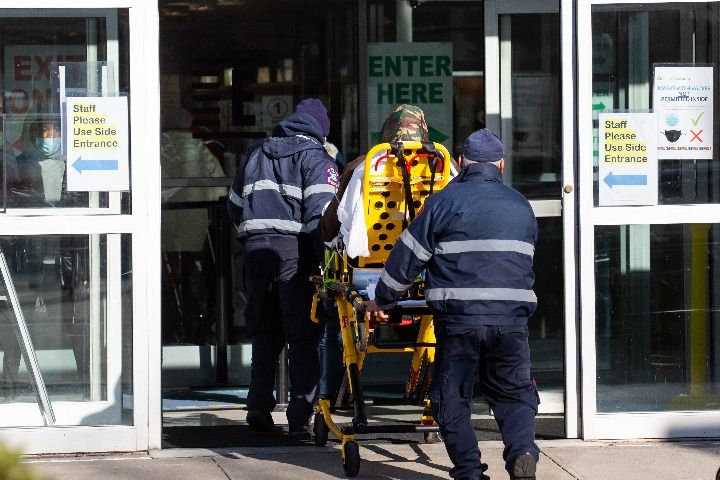The cumulative number of confirmed cases of COVID-19 in the United States exceeded 14 million on the 3rd, and the number of hospitalizations for the coronavirus exceeded 100,000 for the first time on the 2nd. California, the country’s largest state with the largest population, issued a “stay-at-home order”.
California Governor Gavin Newsom made a live broadcast at home on the 3rd, introducing the details of the “stay-at-home order”. The California government divides California into five geographical regions. When the proportion of intensive care beds in any area is as low as 15% or less, that is, at least 85% of intensive care beds are in use, the area will begin to implement “stay-at-home orders”.
With a population of nearly 40 million, California is the most populous state in the United States. Newsom said that four of California’s five regions, including the most populous Southern California region, are expected to have an empty rate of intensive care beds of less than 15% this week, and the remaining area is the San Francisco Bay Area, which is expected to trigger this red line from mid to late this month.

The stay-at-home order will be activated within 48 hours after triggering the bed rate red line, and will continue to be implemented for at least three weeks. During this period, people should stay at home unless they do the necessary activities to go out, such as buying daily necessities, going to appointments to see a doctor, walking dogs and exercising outdoors alone.
Under the “stay-at-home order”, people cannot hold any private gatherings, some commercial facilities are closed, and people must wear masks and distance themselves from others in critical infrastructure and business premises.
Reuters said that California’s “stay-at-home order” is stricter than the epidemic prevention restrictions currently implemented in other parts of the United States.
Newsom said on the live broadcast: “If we don’t act now, our hospitals will not be able to withstand the pressure. If we don’t act now, we’ll continue to see a rise in mortality.”

He also encouraged the public, saying that the California government “does not think it needs to be done again in the future”, that the restrictions are temporary, “this is not a marathon, it is a sprint” and “the dawn is ahead”.
Robert Redfield, director of the Centers for Disease Control and Prevention, said on the 2nd that December to February next year will be “the most difficult period in the history of public health in the United States” and that “by February next year, we will see nearly 450,000 Americans die of the novel coronavirus”. At present, 273,000 people have died of the coronavirus in the United States.
In other parts of the United States, the epidemic is also getting worse. Ohio Gov. Mike DeVane said on the 3rd that the state’s hospital system “not only is still in crisis, but the situation is deteriorating”. Michigan Governor Gretchen Whitmer said on the same day that she was considering extending the ban on closing some private places for another three weeks.
According to the latest data released by Johns Hopkins University on the 3rd, California with the highest cumulative confirmed cases is California, with more than 1.27 million, followed by Texas, the second most populous state, with more than 1.27 million cases, just over 1,000 fewer than California. In addition, there are more than 1.01 million cases in Florida, more than 750,000 cases in Illinois and more than 660,000 cases in New York State.



